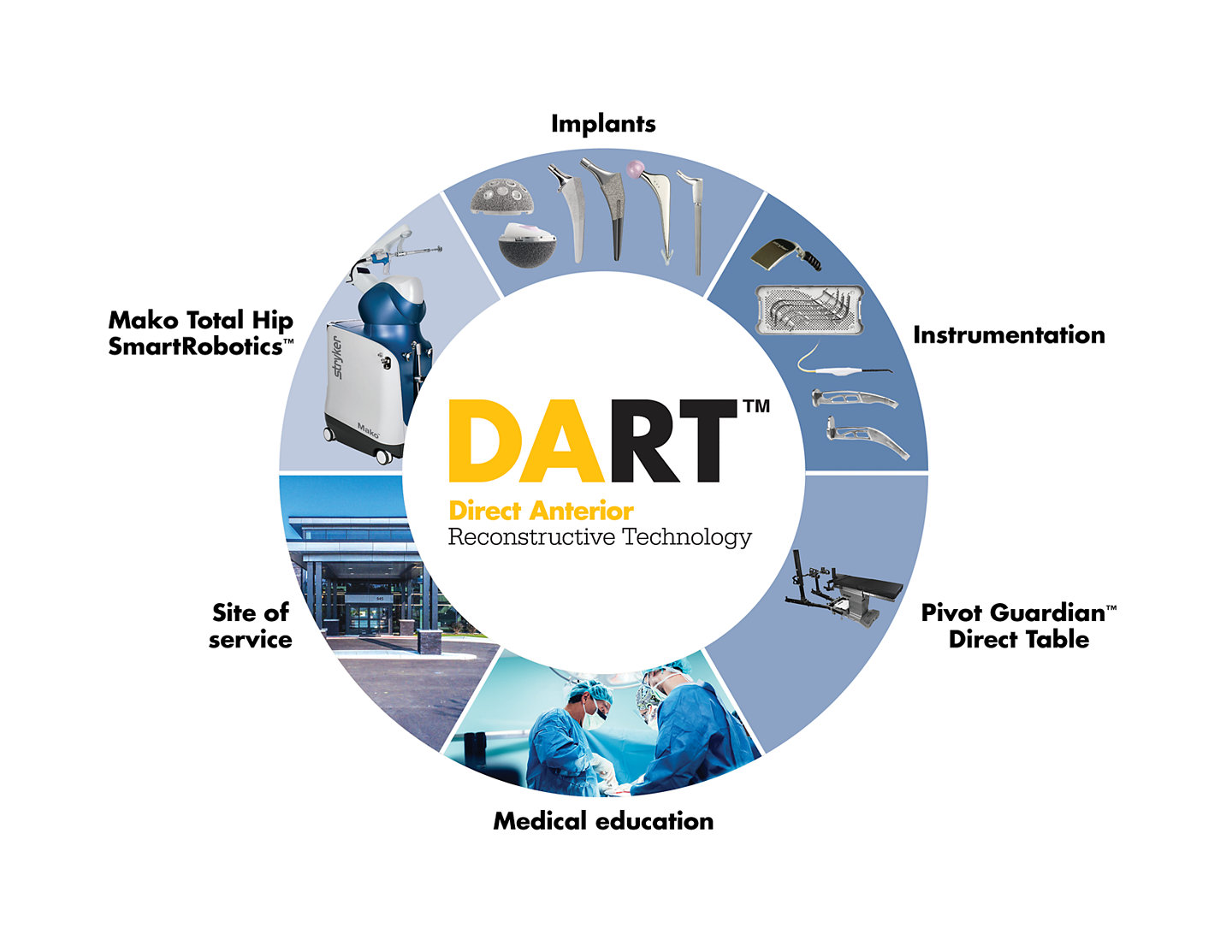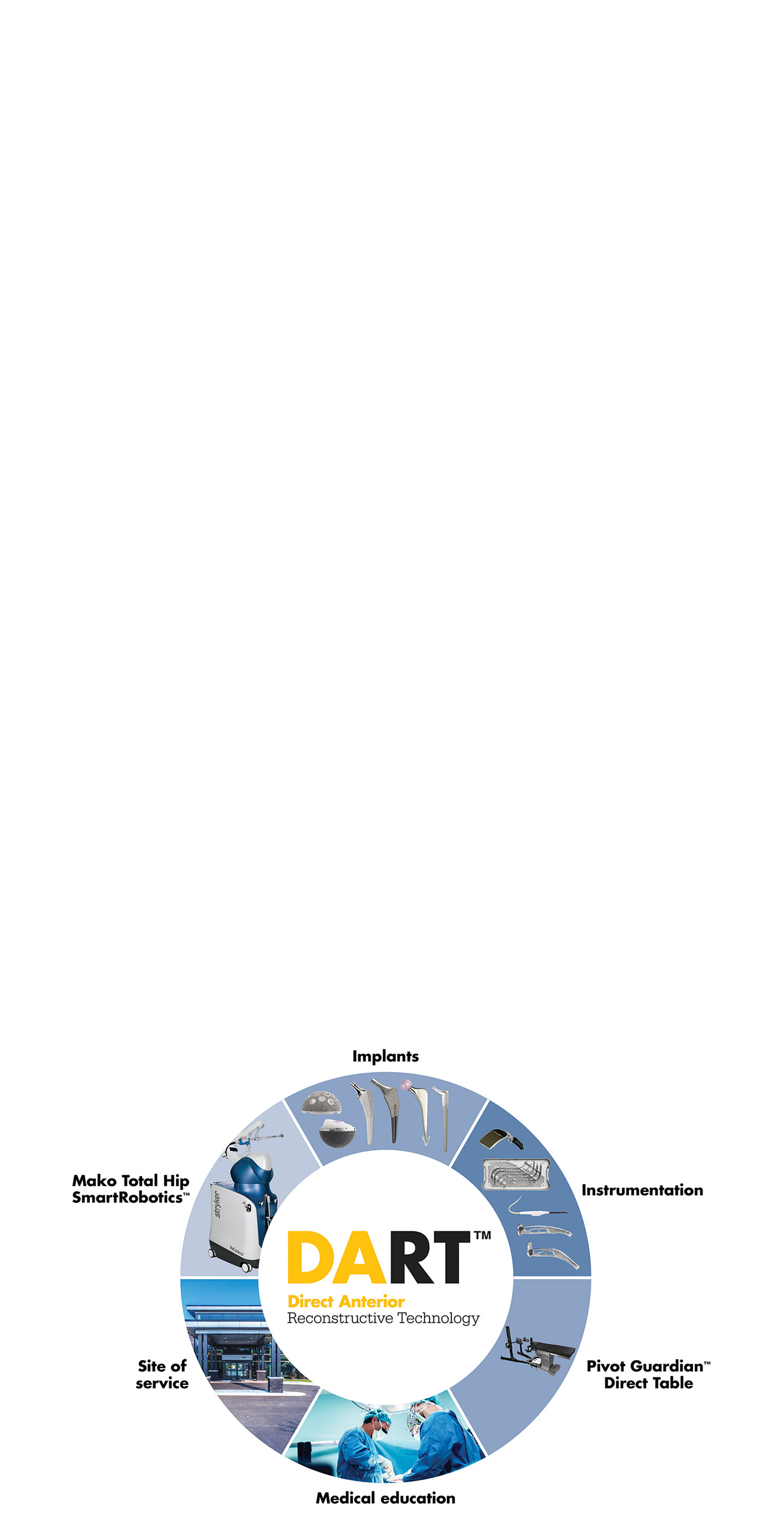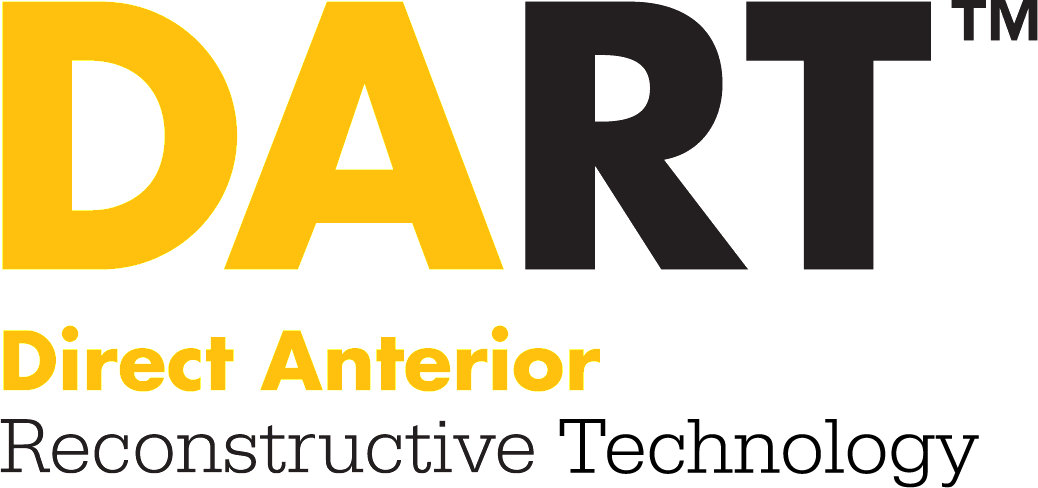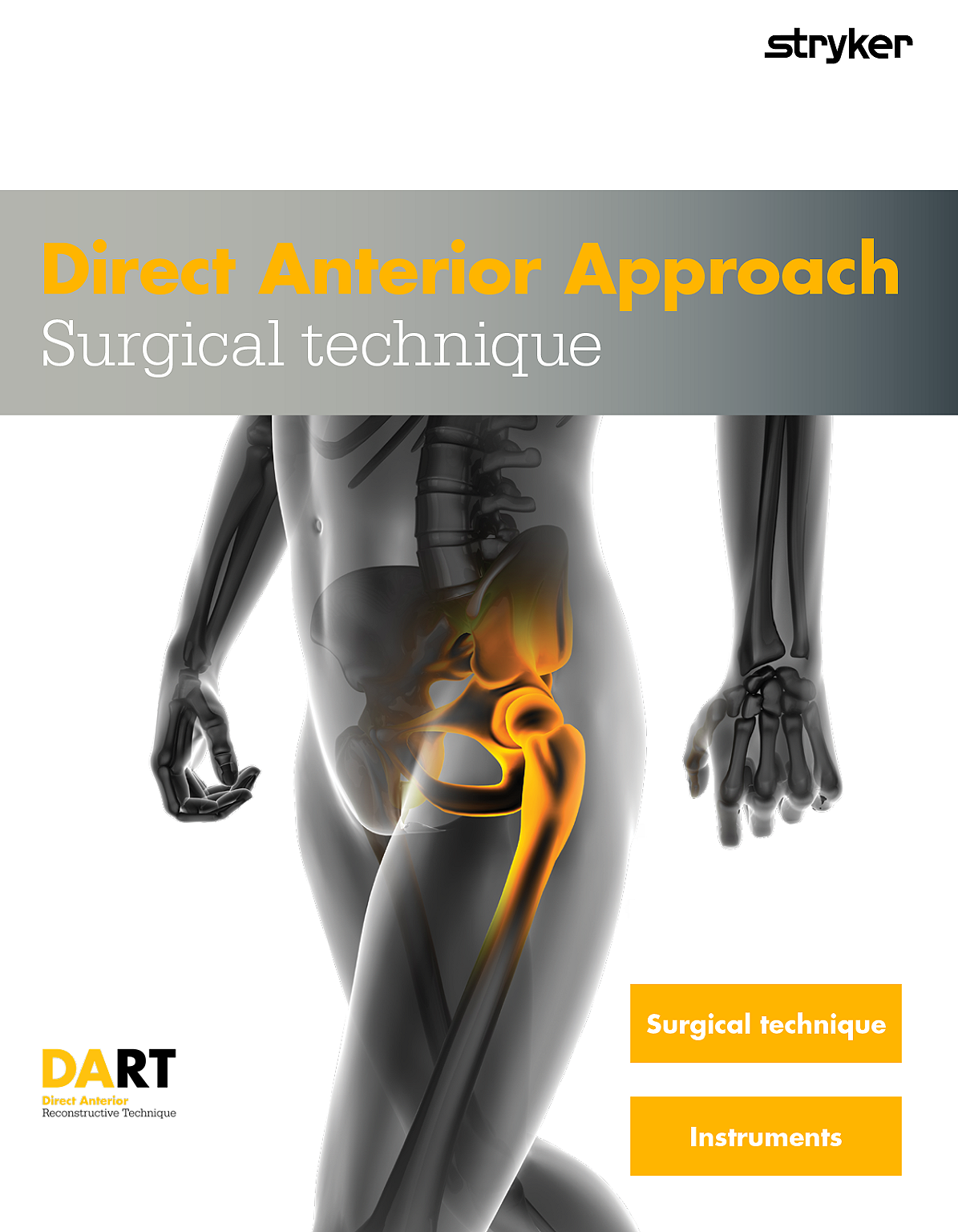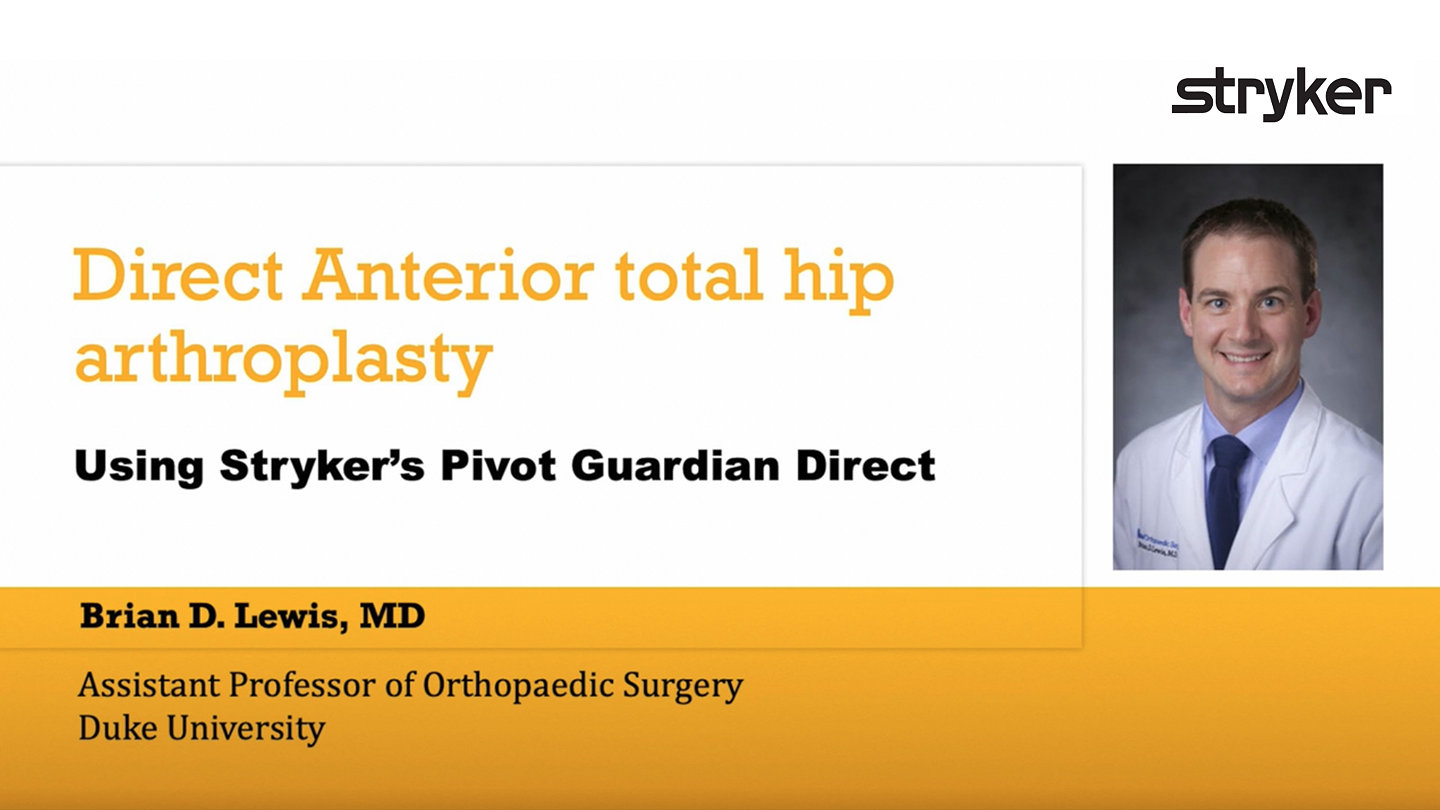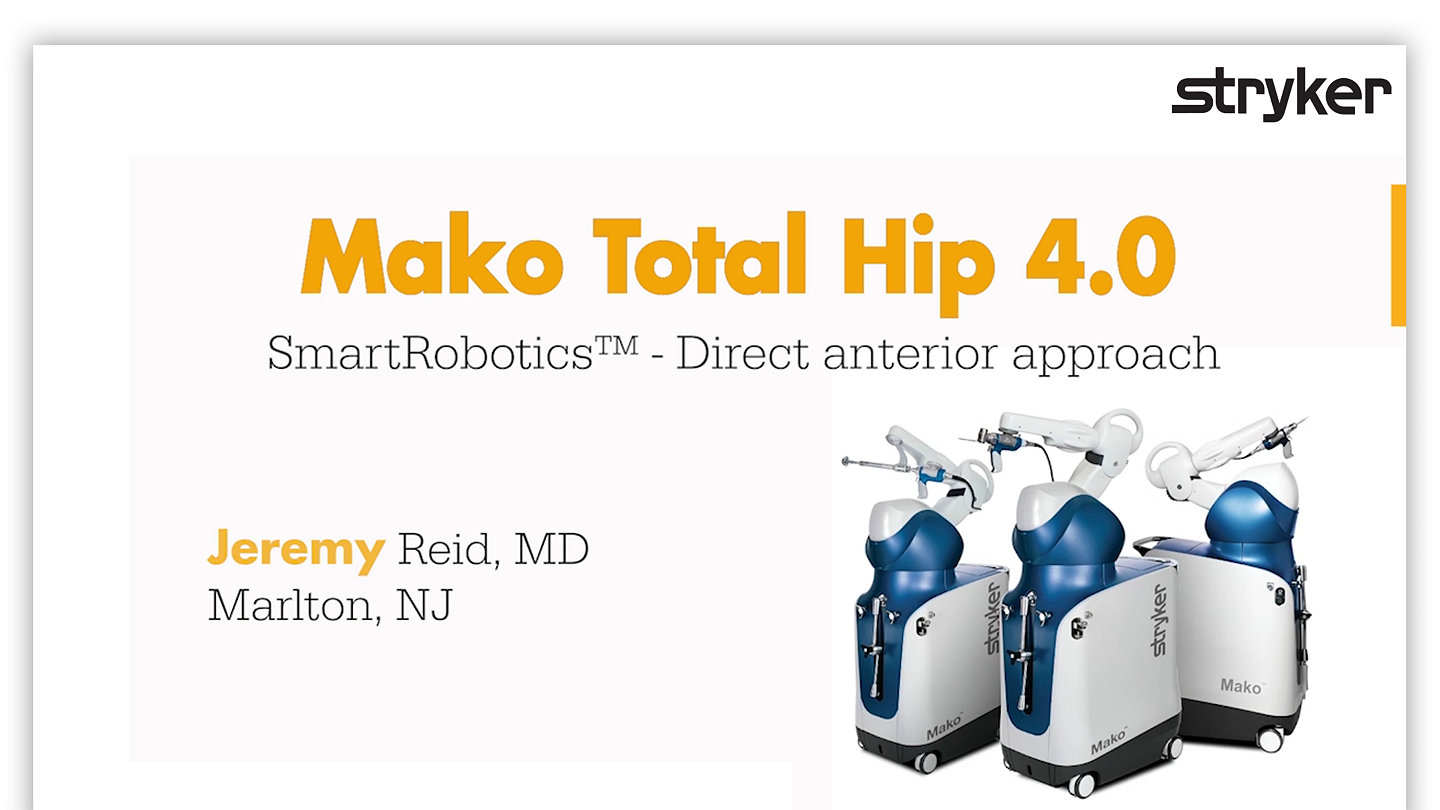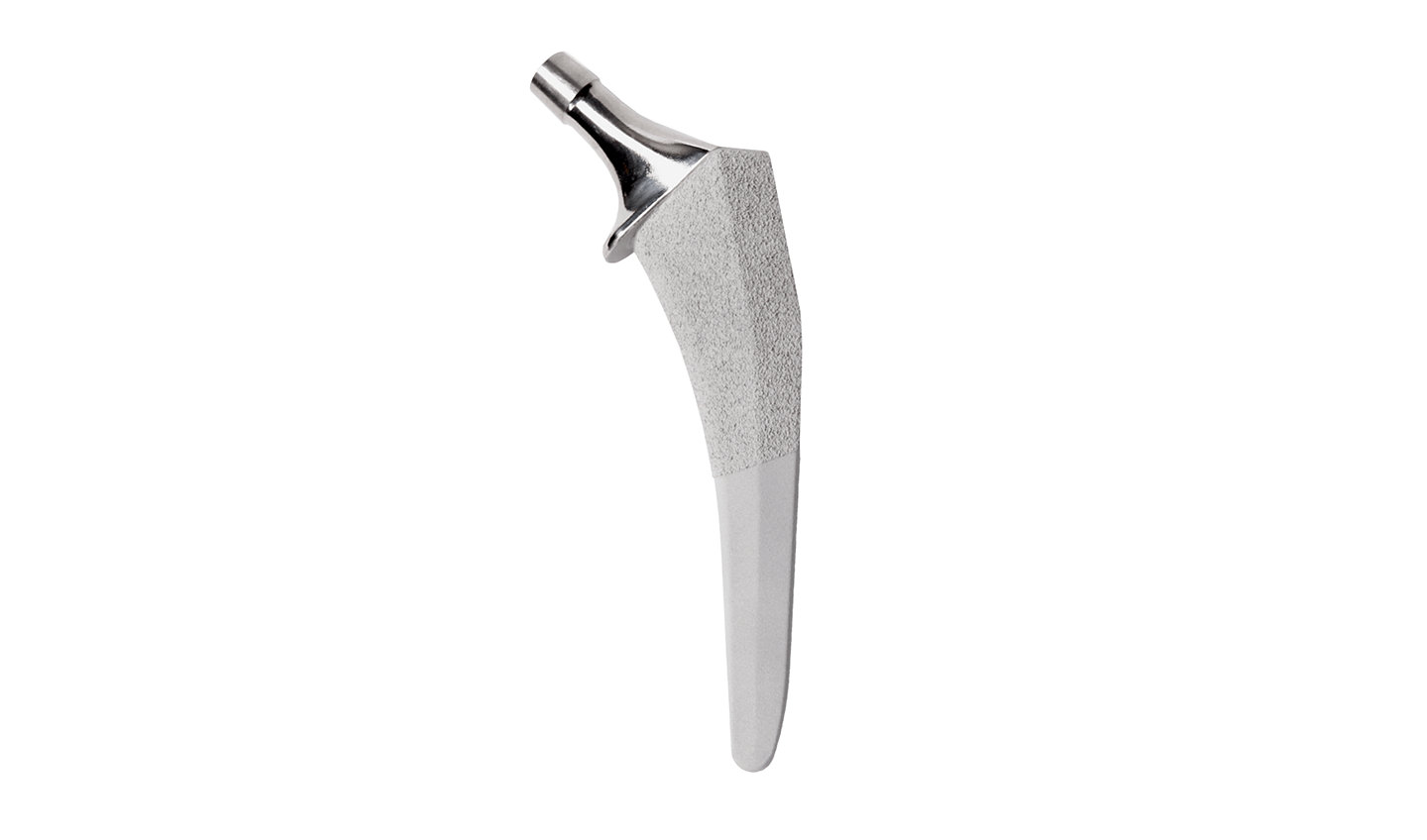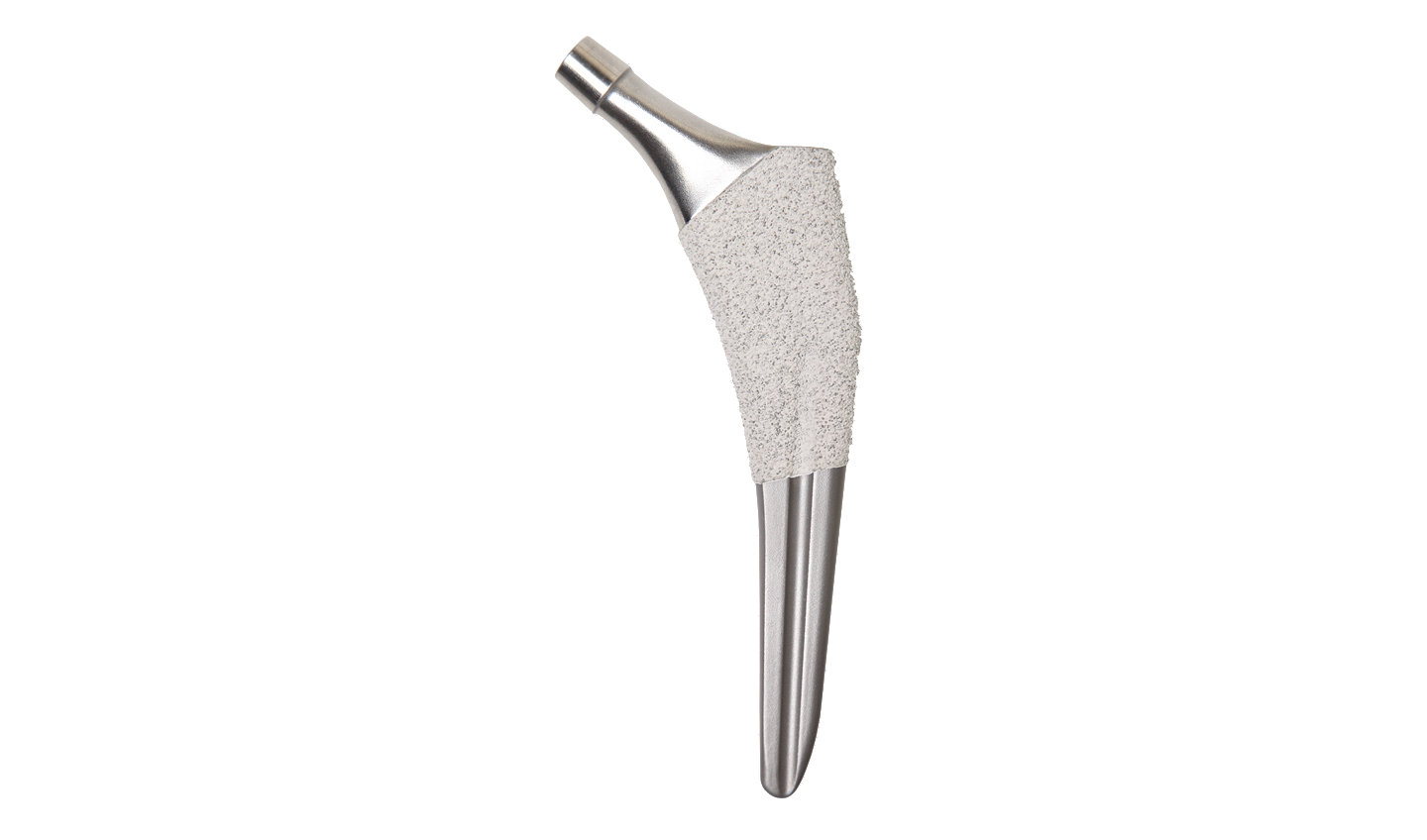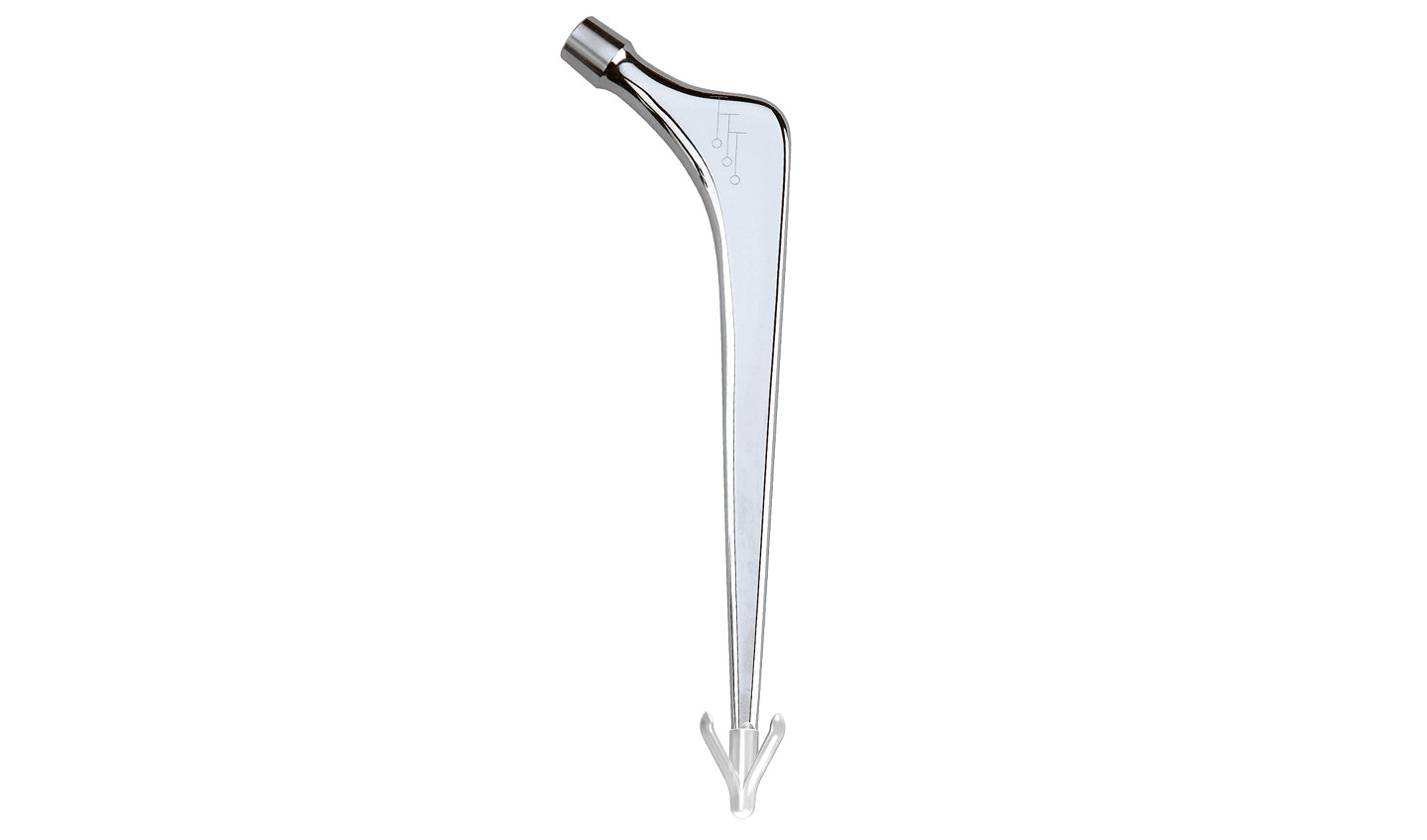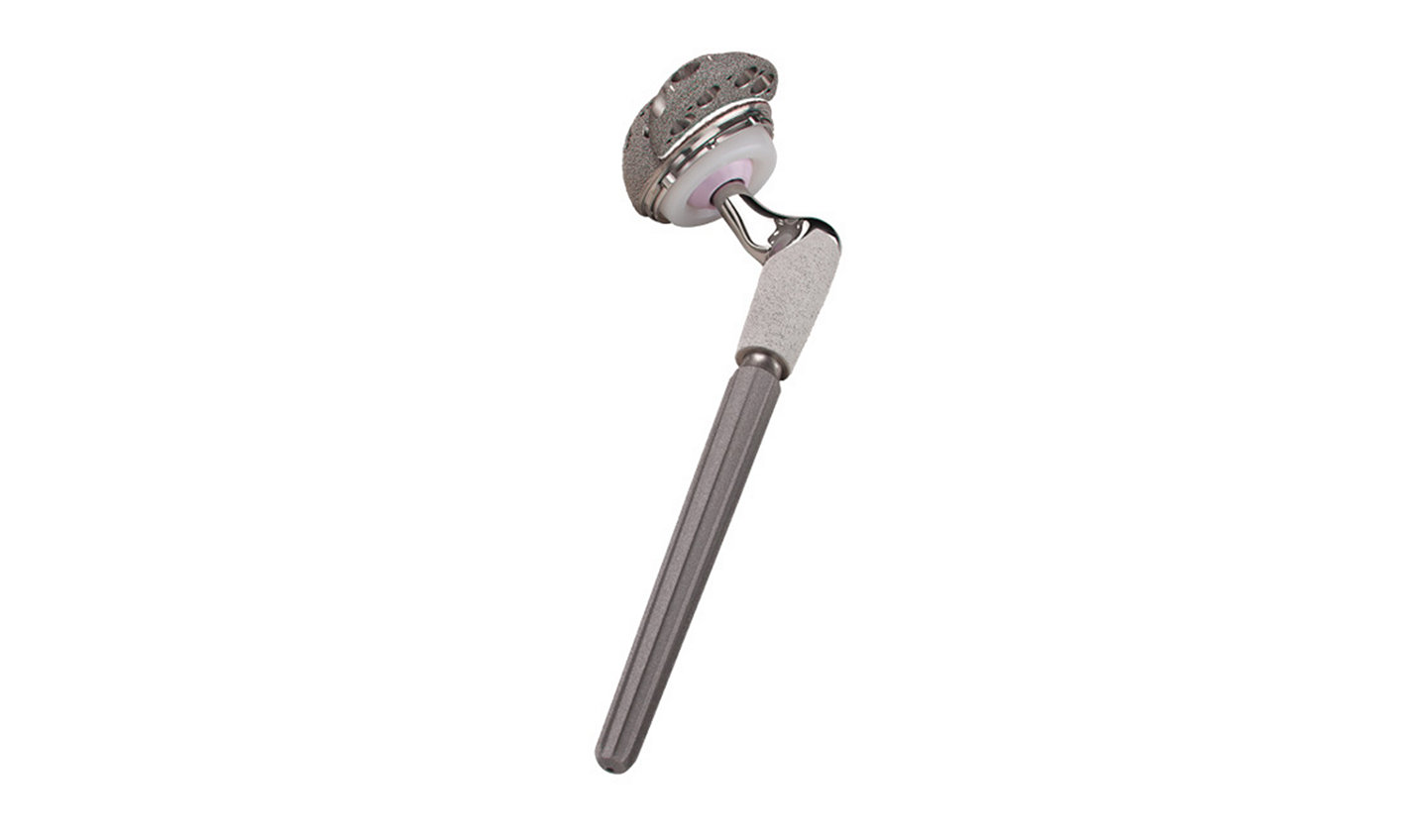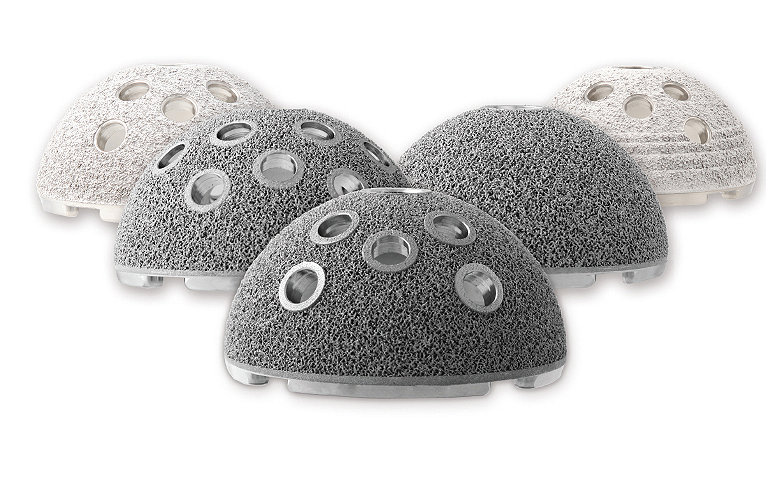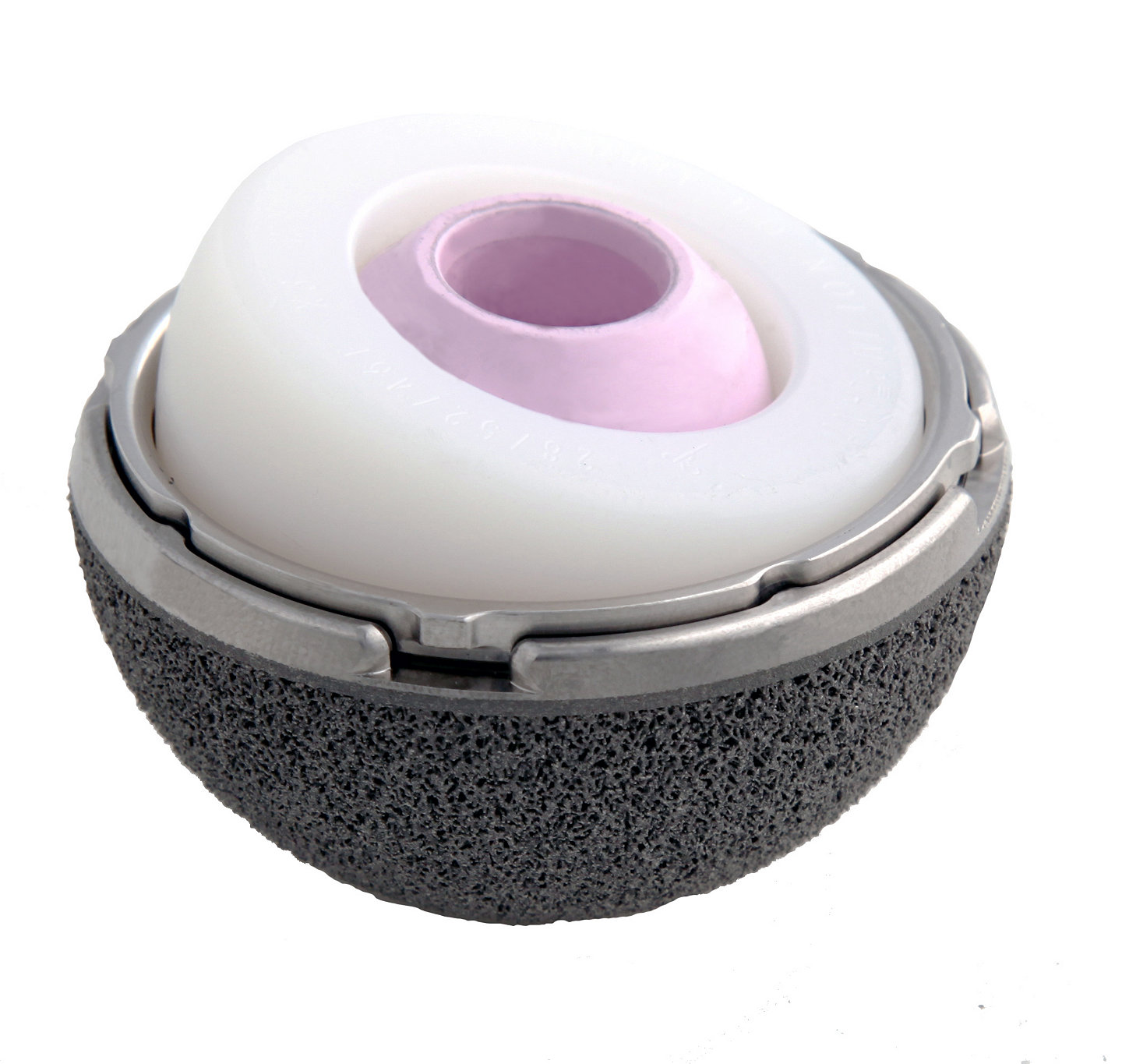Procedural overview
DART
Direct Anterior Reconstructive Technology

The Direct Anterior approach is one of the minimally invasive techniques used in total hip replacement surgery. Continuing orthopaedic experience suggests that this technique may be associated with reduced muscle damage and pain, as well as faster post-operative recovery.
Traditional hip replacement techniques involve operating from the side (lateral) or the back (posterior) of the hip, which requires a disturbance of the joint and connecting tissues and an incision approximately 8-12 inches long.2 In comparison, the Direct Anterior approach requires an incision that may be 3-4 inches in length and located at the front of the hip.2 In this position, the surgeon does not need to detach any of the muscles or tendons.2 The table below illustrates the key potential benefits between traditional replacement and the Direct Anterior approach.
| Surgical Considerations | |
| Traditional Hip Replacement | Direct Anterior Approach |
| 8–12-inch incision² | May be a 3–4-inch incision² |
| Surgical approach - side (lateral) or back (posterior)² | Surgical approach - front (anterior)² |
| Disturbance of the joint and connecting tissues² | Associated with reduced muscle damage² |
View the DART Surgical Technique
Videos
Bikini Incision for Direct Anterior Reconstructive Technology (DART™) Total Hip Arthroplasty
Direct Anterior Approach for Primary THA: Cadaveric Surgical video featuring Insignia®
Medical Education
Medical education tailored to you
Stryker delivers a robust direct anterior education and trainings on the safe and effective use of our products, incorporating the latest and most relevant clinical insights and procedural innovations. With our faculty experts from all around the country, our tailored programs are designed to help enhance and elevate surgeon skills at any point of your direct anterior learning curve!
Contact us
Ready to explore more about the Direct Anterior approach?
Complete the form and a Stryker representative will reach out with more information.
This contact form is intended for healthcare professionals. If you’re looking to contact us about patient materials, please go here.

Implants
Femoral
Insignia®
The Insignia hip stem leverages more than 1,300 CT scans, utilizing a 3D modeling and analytics system, Stryker Orthopedic Modeling and Analytics (SOMA) bone database, and is engineered to optimize fit and function.1 Founded on Stryker’s signature principles of implant fit, Insignia® is your collared, metaphyseal-filling hip stem designed specifically for muscle-sparing approaches.
Accolade II
Morphometric wedge femoral stem, an evolution of your conventional tapered wedge stem that is SOMA-designed for today’s diverse THA patient population.
Exeter
The Exeter cemented femoral hip system is designed for surgeons who are looking to perform all hip indications - primary, revision and fracture - with a single proven system.
Restoration® Modular
Make the most of your revision cases with a clinically-backed platform that is designed to leverage versatility and simplicity to help you achieve desired revision THA outcomes.
Acetabular
Trident II
Have confidence in a powerful combination–a system that builds on the legacy that has defined our Trident brand for more than two decades, paired with the latest additive manufactured Tritanium In-Growth Technology or PureFix HA.
Modular Dual Mobility
Modular Dual Mobility is a premium acetabular offering designed to help prevent dislocation. The system builds upon our Anatomic Dual Mobility offering by providing you a choice of fixation surfaces and screwhole configurations for primary or revision THA.
Mako SmartRobotics™
%20copy?$max_width_png$)
It all starts with a CT scan that creates a 3D image of your patient’s unique anatomy. This information allows you to create your patient’s plan and assess and balance the joint.
Instrumentation
Femoral tray system
Stryker’s femoral tray system is built for efficiency. One general hip instrument tray is compatible across three femoral stems (Insignia, Accolade II, Exeter), allowing for minimal tray usage and cross-compatibility.
Streamlined instrumentations and fewer trays can help lower sterilization costs and create a system more suitable for today’s health care environment, including Ambulatory Surgery Centers (ASC).
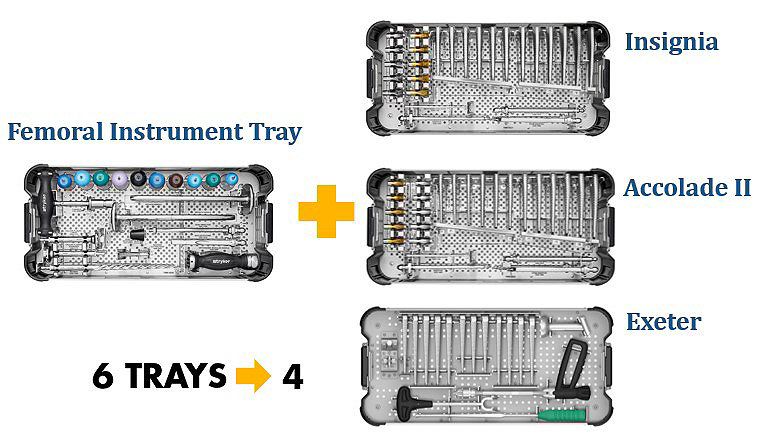
Broach handles
Broach handles feature a lever that is designed to actively secure the broach. This designis meant to minimize potential toggle and facilitate reproducibility of bone preparation.Each handle is fully compatible with Accolade II, Exeter, and Insignia femoral systems.
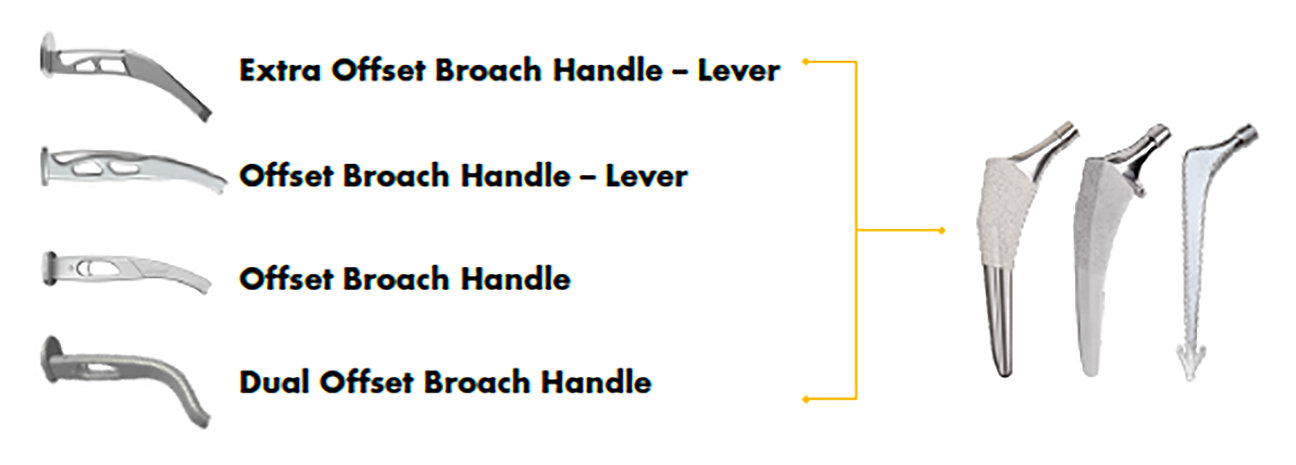
Patient Positioning Equipment
Pivot Guardian Direct

State-of-the-art surgical table accessories spanning six hip procedures.
- Hip arthroscopy
- Direct Anterior total hip arthroplasty
- Hip pinning
- Hip fractures
- Periacetabular osteotomy (PAO)
- Derotational femoral osteotomy (DFO)
Stryker’s Ambulatory Surgery Center (ASC)
At Stryker, we have more of what you need to build and grow your ASC. By giving you access to our deep portfolio of products, guides who understand the ASC landscape, and ongoing support that makes building and growing feel simple, we deliver tailored solutions for where your ASC is today and could be tomorrow.
The expertise. The products. The financing. The implementation.
Stryker's ASC business delivers it all.
References
- Post ZD, Orozco F, Diaz-Ledezma C, et al. Direct anterior approach for total hip arthroplasty: Indications, techniques, and results. JAAOS. 2014;11(9):595-603.
- Wenz J, Gurkan I, Jibodh S. Mini-incision total hip arthroplasty: A comparative assessment of perioperative outcomes. Orthopedics. 2002;25(10):1031-4
DAA-WC-17_33496

